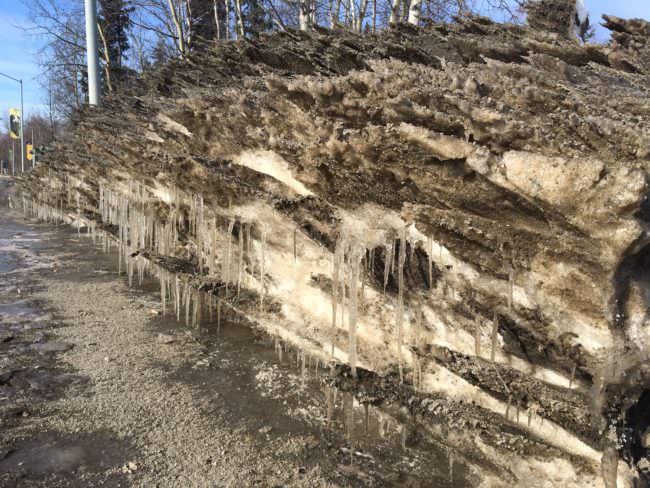
March has brought sun to much of the state. But not a lot of warm temperatures. That weather combination prompted a listener to email to ask why some ice and snow is disappearing, even though it’s well below freezing outside.
Climatologist Brian Brettschneider said it’s not the first time he’s fielded this question.
“It’s all about the sun,” Brettschneider said. “Even when it’s below freezing, direct sunlight works to melt some of the snow.”
Brettschneider said the evidence of this is the presence of icicles.
“Icicles only form when you have melting snow and temperatures below freezing,” Brettschneider said. “So the temperature does magnify the effect, but it is the sun directly hitting the snow that’s causing that melting.”
Around Anchorage in mid-March, there’s about 100 times more solar energy compared to December, around the winter solstice.
“That energy really works on the snow and melts it,” Brettschneider said. “So even if you have the same temperature in late December, versus the same temperature in mid March, it’s a vastly different melting environment.”
The angle of the sun right now (mid-March) in Alaska is equivalent to the angle of the sun at the winter solstice in northern cities in the lower 48 like Chicago or New York.
“In those big cities, even in the middle of winter, they get melting right away, even if it’s below freezing,” Brettschneider said. “And this time of year, it will melt really quick. So that explains why we have snow on the ground so much longer than those other cities. We have 100 or so days a year with snow cover and that’s about the sun angle. So the sun is providing this direct melting, even with temperatures below freezing.”
Do you have a question for our climatologist? Go ahead, ask him!
Annie Feidt is the broadcast managing editor at Alaska Public Media. Reach her at afeidt@alaskapublic.org. Read more about Annie here.





